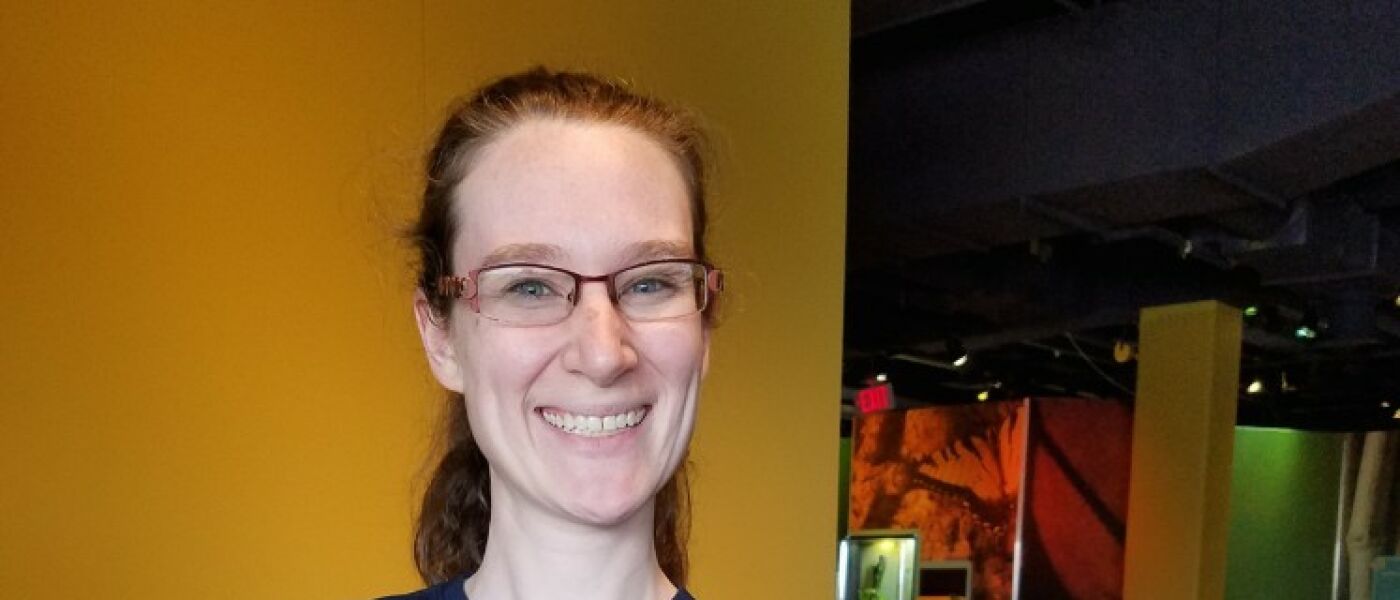Women's History Month Highlight: #HERper, Animal Keeper, Courtney Torregrosa
Courtney and Tegu are firm friends.
For Women’s History Month the Liberty Science Center blog is highlighting women working in STEM at the Science Center. Our hope is that their stories will inspire young girls and women all over New Jersey to consider a career in the STEM fields.
My first real job was at a local pet shop. It was there that I first learned about caring for reptiles and amphibians. For whatever reason, they struck a chord with me.
During my college years I had the opportunity to work with a variety of captive exotic and domesticated animals. While they were all interesting, if there was an internship to choose or a research project to be done, I always went back to herpetology, the study of reptiles and amphibians. Even classes about animal behavior and nutrition were largely based on studies of domestic birds and mammals. Birds and mammals have been studied in depth, so people are familiar with them. The fact that less was known about reptiles and amphibians fueled my interest.
My mother told me she was speaking to an old friend about my career. Her friend said: “But she used to be so girly!” It’s true, I wore dresses and played with dolls, but I played in the woods, too.
Zookeeping has become a field dominated by women, but that trend took a bit longer to hit the reptile department. Looking back, a woman working with reptiles is not as recent a development as one might think. Grace Olive Wiley was the curator of herpetology at two different facilities before she opened and maintained her own reptile zoo in California in the 1920s-‘40s. She is best known for her belief that treating a venomous snake with respect would allow a keeper to care for these potentially dangerous animals without commonly used tools. Mary Cynthia Dickerson was a founding curator of the department of herpetology at the American Museum of Natural History.
As women seem to do throughout history, they have quietly made their mark here. Today women are raising money for conservation efforts, breeding endangered species in captivity, and becoming curators and directors of reptile departments.
Women and girls should not shy away from working with reptiles because it seems too masculine. They should come and find their place in this ever-expanding science knowing that without women, the field of herpetology wouldn’t be where it is now.
Women’s History Month blog by Courtney Torregrosa. Courtney is an Animal Keeper at Liberty Science Center.

